|
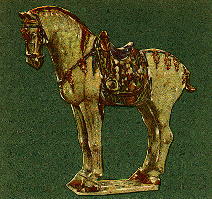 It is a type of pottery burnt at low temperature in the Tang Dynasty. Its producing places are mainly distributed in Henan, Shaanxi and Hebei Provinces, etc. Its wadding is grey white in colour, its glaze is yellow, green or white. Its glaze is coloured with oxide containing copper, iron, cobalt, etc. The melt-enhancing matter in the lead constituted in the glaze helps the glaze juice flow in the course of burning and can put the glaze into different shapes. In the early time there were mono -coloured pottery or bicoloured pottery. The so- called trio- coloured pottery does not possess more than three colours. It mainly served as funerary objects and figurines. It is a type of pottery burnt at low temperature in the Tang Dynasty. Its producing places are mainly distributed in Henan, Shaanxi and Hebei Provinces, etc. Its wadding is grey white in colour, its glaze is yellow, green or white. Its glaze is coloured with oxide containing copper, iron, cobalt, etc. The melt-enhancing matter in the lead constituted in the glaze helps the glaze juice flow in the course of burning and can put the glaze into different shapes. In the early time there were mono -coloured pottery or bicoloured pottery. The so- called trio- coloured pottery does not possess more than three colours. It mainly served as funerary objects and figurines.
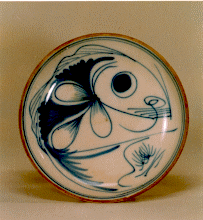 It is a method of applying black and white to the glaze of porcelain . The cobalt pigment is coloured onto the inner side of the glaze. Its embryonic form emerged in the Tang and Song Dynasties. The mature colouring of black and white came into being in the Hutian kiln of Jingde Town, Jiangxi Province. The process goes like this: they use cobalt pigment to adumbrate pattern on the mould, and then put the glaze on the mould before it is put into the kiln for burning. The making of the black and white porcelains was in its boom in the Xuande Period of the Ming Dynasty. This kind of Porcelain was in possession of simple and sketchy style. Its contour is finished at one stroke. Since the middle and later periods of the Ming Dynasty, its colours have been become abundant. It is a method of applying black and white to the glaze of porcelain . The cobalt pigment is coloured onto the inner side of the glaze. Its embryonic form emerged in the Tang and Song Dynasties. The mature colouring of black and white came into being in the Hutian kiln of Jingde Town, Jiangxi Province. The process goes like this: they use cobalt pigment to adumbrate pattern on the mould, and then put the glaze on the mould before it is put into the kiln for burning. The making of the black and white porcelains was in its boom in the Xuande Period of the Ming Dynasty. This kind of Porcelain was in possession of simple and sketchy style. Its contour is finished at one stroke. Since the middle and later periods of the Ming Dynasty, its colours have been become abundant.
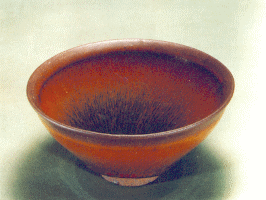 It is also called "Tianri Glaze". It mainly refers to the kilned porcelain with Black glaze produced in Fujian and Jiangxi provinces. Since there are speckles on this type of porcelain, it is called "Tianmu", the eye of heaven. It is also said that it is named after the Tianmu Mountain. Tianmu porcelain is characterized by black and yellow base glaze, on which there are "rabbit- hair grain" and "hawksbill turtle grain". It is also called "Tianri Glaze". It mainly refers to the kilned porcelain with Black glaze produced in Fujian and Jiangxi provinces. Since there are speckles on this type of porcelain, it is called "Tianmu", the eye of heaven. It is also said that it is named after the Tianmu Mountain. Tianmu porcelain is characterized by black and yellow base glaze, on which there are "rabbit- hair grain" and "hawksbill turtle grain".
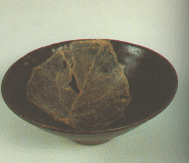 It is famous kiln in the Song Dynasty, which was situated in Ji"an, Jiangxi province and also called "Yonghe kiln" and "Dongchang kiln". It burned the porcelain with black glaze on which there are many grains and patterns. In addition, it also produced the porcelain by employing the skills of paper cutting. The themes of its patterns are animals, fauna and flora,etc. It is famous kiln in the Song Dynasty, which was situated in Ji"an, Jiangxi province and also called "Yonghe kiln" and "Dongchang kiln". It burned the porcelain with black glaze on which there are many grains and patterns. In addition, it also produced the porcelain by employing the skills of paper cutting. The themes of its patterns are animals, fauna and flora,etc.
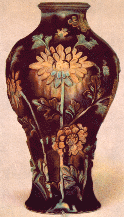 It is a type of pottery kilned at low temperature in the south of Shanxi province. Its constitution of glaze is similar to coloured glaze . There were pottery wadding for it in the Ming Dynasty and porcelain wadding in the Qing Dynasty. Its products include vase, incense burner, sculpture,etc. Its patterns include flower, bird and figures. It is a type of pottery kilned at low temperature in the south of Shanxi province. Its constitution of glaze is similar to coloured glaze . There were pottery wadding for it in the Ming Dynasty and porcelain wadding in the Qing Dynasty. Its products include vase, incense burner, sculpture,etc. Its patterns include flower, bird and figures.
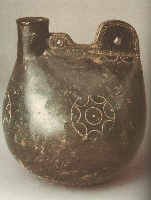 It is a type of pottery and also called "cockscomb kettle". It derived from the leather bag used by the Qidan nationality in the north. It is a type of pottery and also called "cockscomb kettle". It derived from the leather bag used by the Qidan nationality in the north.
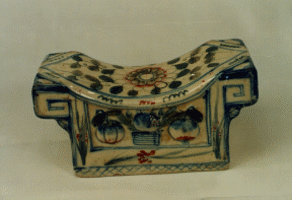 It originated in the Sui and Tang dynasties. It takes various shapes: rectangular, waist-shaped, cloud-shaped,etc. There are also baby-shaped , tiger-shaped and dragon-shaped pillows. It originated in the Sui and Tang dynasties. It takes various shapes: rectangular, waist-shaped, cloud-shaped,etc. There are also baby-shaped , tiger-shaped and dragon-shaped pillows.
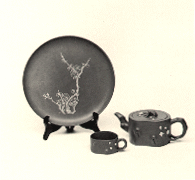 It is a type of purple pottery made of mud without glaze. The document of the Song dynasty have mentioned this type of pottery. It flourished in the Ming and Qing Dynasties. Yixing, Jiangsu Province is famous for making purple grit pottery. Among the potteries, purple grit teapot is most famous. It can maintain the original flavour of tea and looks beautiful. It is a type of purple pottery made of mud without glaze. The document of the Song dynasty have mentioned this type of pottery. It flourished in the Ming and Qing Dynasties. Yixing, Jiangsu Province is famous for making purple grit pottery. Among the potteries, purple grit teapot is most famous. It can maintain the original flavour of tea and looks beautiful.
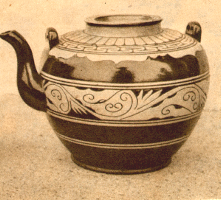 It is a type of pottery kilned in Anfu, Sichuan Province. It is made by the high-quality soil produced in this area. Its products are mainly daily appliances. Its model is beautiful and glaze is bright. It subcategorizes into fine pottery with thin and hard wadding, and colourful pottery with many grains. It is a type of pottery kilned in Anfu, Sichuan Province. It is made by the high-quality soil produced in this area. Its products are mainly daily appliances. Its model is beautiful and glaze is bright. It subcategorizes into fine pottery with thin and hard wadding, and colourful pottery with many grains.
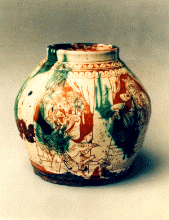 It is a type of pottery kilned in Jieshou, Anhui province . It has fine wadding and its glaze is in red, green, yellow, etc. Themes of its patterns are from theatrical tales. It is a type of pottery kilned in Jieshou, Anhui province . It has fine wadding and its glaze is in red, green, yellow, etc. Themes of its patterns are from theatrical tales.
|
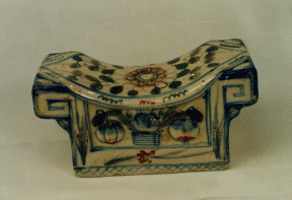 |
重點閱讀
查看心情排行您看到此篇文章时的感受是:

支持
高兴
震惊
愤怒
无奈
谎言
枪稿
不解
搞笑
无聊
标题党
0
顶一下2
踩一下
顶一下2
踩一下
[錯誤報告] [推薦] [收藏] [打印] [關閉] [返回頂部]

 已有
已有













